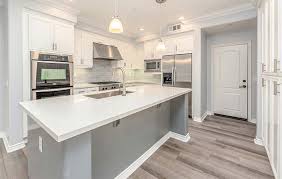Skirting boards and architraves are decorative mouldings that serve both practical and aesthetic purposes. Skirting boards, also known as baseboards, run along the bottom of walls to cover the joint between the wall and floor, protecting against scuffs and damage. Architraves frame doors and windows, creating a smooth transition between the wall and structural openings. Together, they provide a cohesive and professional look, elevating the overall interior design of a home.
Practical Benefits of Skirting and Architrave
One of the main advantages of skirting and architrave is protection. Skirting boards shield walls from knocks, furniture marks, and daily wear, while architraves protect door and window frames from chips and damage. They are particularly useful in high-traffic areas or homes with children and pets, where walls and frames are more likely to suffer from impacts. Beyond protection, these mouldings also make maintenance easier by preventing dirt from accumulating in wall-floor gaps and around doors.
Enhancing Aesthetic Appeal
Skirting and architraves do more than protect; they add depth, character, and style to any room. By providing clean edges along floors, doors, and windows, they create a polished and finished appearance. Modern homes often use sleek, minimalist skirting boards and architraves to complement contemporary décor, while traditional homes may feature ornate or decorative profiles that enhance the character of the space. Choosing the right style, height, and profile of skirting and skirting architrave can transform a plain room into one that feels complete and professionally designed.
Choosing the Right Material
Materials for skirting and architrave vary depending on style, durability, and budget. Common options include MDF, solid wood, and PVC. MDF is popular due to its smooth finish, affordability, and ease of painting, making it ideal for modern and traditional interiors alike. Solid wood offers natural beauty and durability, perfect for high-end or classic homes. PVC is lightweight, water-resistant, and suitable for areas prone to moisture, such as kitchens and bathrooms. Selecting the right material ensures both longevity and visual appeal.
Installation Tips for a Professional Finish
Correct installation is key to achieving a polished look. Ensure that walls and floors are level and measurements are accurate before fitting skirting and architrave. Corners should be mitred or joined neatly, and gaps should be filled and painted for a seamless appearance. For DIY enthusiasts, pre-primed or ready-to-paint mouldings can simplify the process, while professional installation guarantees precision and a flawless finish.
Matching Skirting and Architrave with Interior Design
Skirting and architrave should complement the overall design theme of the home. For minimalist interiors, simple, flat profiles painted in a matching wall colour create a subtle, modern look. For classic or traditional interiors, taller skirting boards with decorative detailing paired with ornate architraves can enhance elegance and sophistication. Coordinating colours, finishes, and styles across all rooms ensures consistency and a cohesive aesthetic throughout the home.
Conclusion
Skirting and architrave may seem like minor details, but they play a crucial role in protecting your walls and frames while enhancing the beauty and professionalism of your interiors. Choosing the right design, material, and finish can elevate a room, making it look well-planned and polished. Whether renovating, decorating, or simply upgrading a space, investing in high-quality skirting and architrave is an effective way to achieve a refined and durable interior finish that will impress for years to come.


